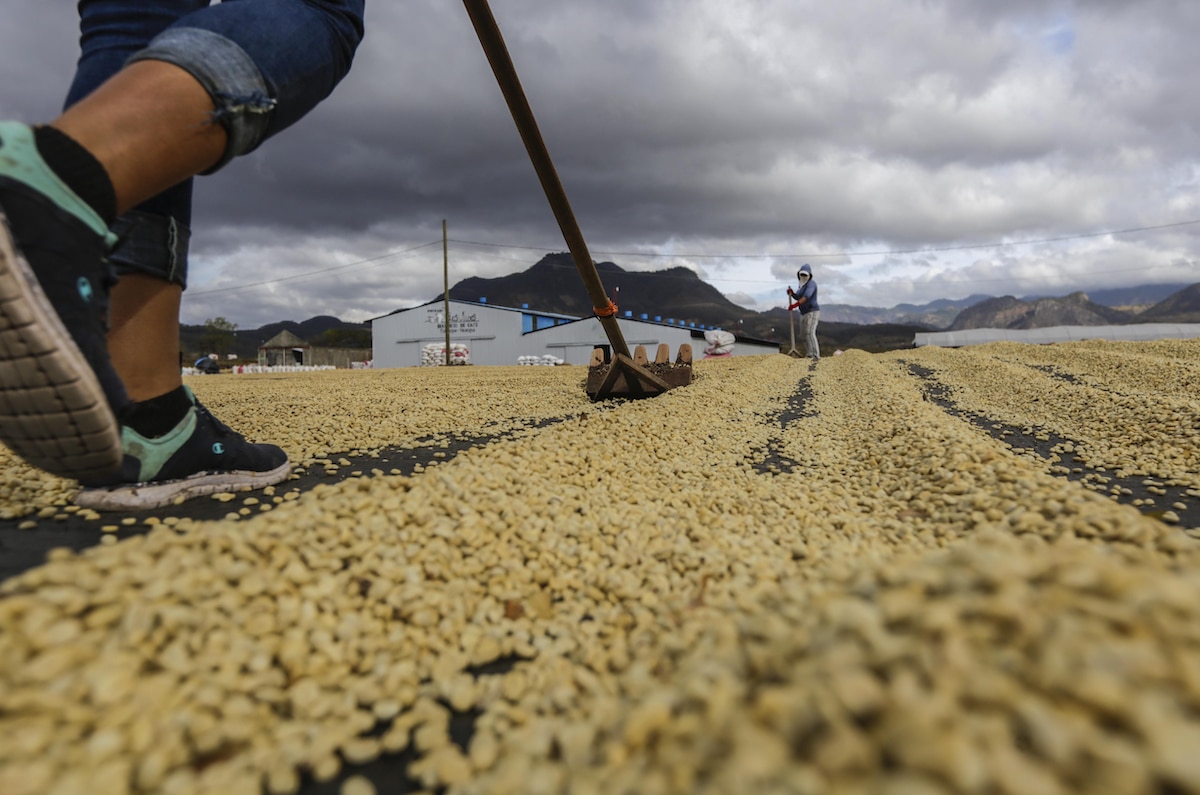Rising Temperatures Due to Climate Change Will Reduce Coffee Production Globally, Study Suggests

 Why you can trust us
Why you can trust us
Founded in 2005 as an Ohio-based environmental newspaper, EcoWatch is a digital platform dedicated to publishing quality, science-based content on environmental issues, causes, and solutions.
Humans have been drinking coffee for hundreds of years, and in that time the rich, aromatic beverage has become not only a way to start the day, but part of culture all over the world.
Coffee is so much a part of some people’s routine that they couldn’t imagine the day without it. But with rising global temperatures due to climate change, the world’s coffee supply is becoming less reliable.
Climate conditions that interfere with coffee yield have become more common in the past forty years, and a new study suggests that global heating is likely to result in interference with worldwide coffee production, The Guardian reported.
“With climate change projections showing a continued rise in temperatures in the tropics is likely, we suggest that coffee production can expect ongoing systemic shocks,” the authors of the study wrote. “As with other crops, a systemic risk to the global coffee trade is posed by synchronised crop failures.”
In the study, “Synchronous climate hazards pose an increasing challenge to global coffee production,” published in the journal PLOS Climate, the researchers looked at how climate factors like rainfall, temperature and humidity affected the dozen biggest coffee-producing countries in the world between 1980 and 2020.
The research team found that the occurrence of “climate hazards” causing less than ideal growing conditions had increased in all coffee growing regions during the study timeframe. The team also found that five out of six of the most challenging years for coffee cultivation happened between 2010 and 2020.
“During any given year, climate hazards such as heatwaves, droughts, frosts and floods can each affect coffee yield,” the study authors wrote.
About 90 percent of global coffee production comes from the top 12 coffee growers, including Peru, Mexico, Brazil, Ethiopia, Uganda, Indonesia and Vietnam, reported The Guardian.
“Major arabica regions in the far southeast of Brazil and southwest Ethiopia are amongst the least susceptible regions to climate hazards,” the authors of the study wrote.
The two main types of coffee in the world, robusta and arabica, have ideal growing temperatures of 71.6 to 82.4 degrees Fahrenheit and 64.4 to 71.6 degrees Fahrenheit, respectively, The Guardian reported.
The researchers discovered that, during the study period, coffee growing regions were inclined to be too cold for optimum coffee cultivation. They also found that currently all regions are too hot, and that most of them “never experience too-cold growing season temperatures,” the study said.
Lead author of the study Dr. Doug Richardson said the research team was “pretty confident” that the change in conditions was caused by climate change, reported The Guardian.
Richardson said coffee prices can be expected to increase when there is a shock to supply and not enough of a stockpile to buffer it.
A previous study, “Expected global suitability of coffee, cashew and avocado due to climate change,” by scientists from Switzerland said new regions are predicted to become fit for growing coffee by 2050.
“For example, parts of China, Argentina and the U.S. are likely to become more suitable for coffee growing just as the likes of Brazil and Colombia see their land become less suitable,” University of South Wales professor Denis J. Murphy wrote in The Conversation of the earlier study.
Subscribe to get exclusive updates in our daily newsletter!
By signing up, you agree to the Terms of Use and Privacy Policy & to receive electronic communications from EcoWatch Media Group, which may include marketing promotions, advertisements and sponsored content.

 233k
233k  41k
41k  Subscribe
Subscribe 




